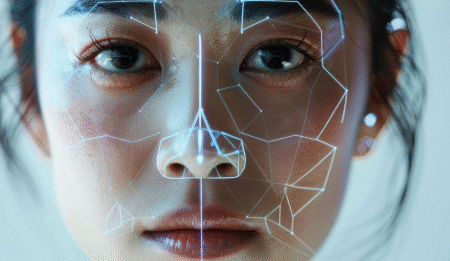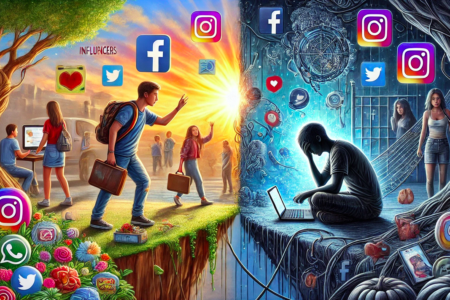In a world where reality and illusion go hand in hand, deepfakes do not merely deceive the eye—they inflict pain. They bruise reputations, shatter trust, destabilize institutions, and wreak havoc with the very concept of truth. Even though the machinery of deepfakes might be breathtaking, its effects are usually devastating. The victims are not merely presidents or pop stars—but your neighbor, your classmate, your parents, your kids. When Scams Wear a Familiar Face Picture getting a video call from the CEO of your company—hastily, calmly, and reassuringly familiar. He requests you wire money instantly for an acquisition. It sounds like him. The demeanor is the same. You comply, only to learn that you were talking to an empty space. This isn’t science fiction—it’s already occurred. In one instance, a multinational company wired more than $20 million to scammers who employed a fake replica of the CEO to stage the robbery. The most chilling aspect? It was virtually impossible to tell the real from the fake—until it was much too late. This is not just limited to the boardroom. Scammers today impersonate celebrity voices, creating fake endorsement testimonials for questionable products. These are slick, convincing, and hard to refute—particularly for the elderly or vulnerable citizens who are less versed in AI deception. The consequence? Shattered confidence, pilfered funds, and rising fear. Politics Under Siege Now picture an election week in a weak democracy. Then, out of nowhere, a clip comes up of the front-runner promising communal violence or admitting to vote rigging. It goes viral on WhatsApp channels and TikTok. Even if it’s soon disproved, doubt has been sown. Trust fractures. Votes change. A democracy shakes. We have glimpsed shadows of this situation already. In Ukraine, a deepfake of President Zelenskyy telling soldiers to surrender shook national morale temporarily before it was revealed to be a lie. In the UK and US, deepfake audio recordings have impersonated political figures making racist or inflammatory comments. The threat of disruption is immense. When democracy is used as a stage of illusions, who are the public supposed to trust? Personal Dignity Exploited The most stomach-churning effect of deepfakes is probably the invasion of personal privacy—particularly against women and teenagers. AI software is being applied to “nudify” individuals, producing realistic non-consensual pornography. These aren’t mere pictures. They are weapons of humiliation, blackmail, and psychological warfare. In Australia, a popular sports presenter was appalled to discover that her famous face had been superimposed on explicit photos that were being shared online. Students in India and South Korea have even been subjected to harassment and humiliation by classmates through deepfake nudes. The victims are silently suffering—most too afraid to come forward, not knowing whether the law can assist them, and traumatized by having their trust broken. No one is exempt. Your daughter’s school picture. A friend’s selfie on social media. A coworker’s vacation video. In mere moments, these can be manipulated and made into something ghastly. The damage that remains is not digital—it is psychological, social, and deeply human. Our Eyes Deceive Us What is frightening about deepfakes is how well they can emulate the real. Research indicates that we humans can only correctly identify deepfakes 24% to 62% of the time, depending on the context. That implies that the majority of us are getting it wrong more often than we realize. And worse, we’re also arrogant—convinced that we know the difference when we actually don’t. The reality is, we’ve moved into a new era where an eye no longer confirms what it sees. If video can’t be relied upon, what becomes of witness testimony? Of journalism? Of evidence in court? Of the emotional connections we make through glimpsing a loved one’s face or listening for their voice? The illusion isn’t merely visual—it’s one of existence. Social Media: The Breeding Ground Social media virality is kerosene on fire. Social platforms such as X, Instagram, and TikTok pay attention to interaction, not accuracy. A salacious deepfake goes further and wider than any fact-check soberly done. In India, 77% of misinformation is created on social media—where algorithms don’t ask “Is it true?” but “Will it go viral? This is not by chance. These sites’ designs favor shock rather than substance. The more sensational the material, the greater the number of clicks, and the stronger it survives. Here, deepfakes are not just invited—they’re rewarded. And that leaves each of us in an ongoing state of uncertainty, suspended between fact and fiction. The New Faces of Bullying and Blackmail We worried about schoolyard bulling. Now we worry about deepfake bulling. Teenagers are producing videos of students doing things they never did—saying things they never said. The damage is devastating. Some victims are ashamed to even complain. Others are gaslighted, told it’s “just AI,” or “not real,” when the harm they experience is very real. In their most evil forms, deepfakes are being used for sextortion. A kid is coerced into thinking that there are incriminating photos, when there aren’t. Or an actual photo is manipulated just enough to be a weapon. The threat is chilling. And the emotional consequences—shame, guilt, fear—are toxic to young minds. What’s at Stake Let us be unambiguous: deepfakes are not a prank or a trend. They are an ethical test for our society. They challenge us to consider: do we cherish truth over convenience, trust over traffic, humanity over clicks. If left unchecked, deepfakes will lead us down a path where nothing can be believed, no one can be trusted, and every image, every voice, every story is suspect. That is a world without truth. And a world without truth is a world without justice, without community, without hope. Hope Is Still Possible But here’s the good news—resistance is on the rise. Technologies are developing to detect and flag manipulated media. New legislation, such as the U.S. TAKE IT DOWN Act, is being proposed to safeguard victims. Nations such as Australia are incorporating deepfake awareness into schools. India is considering reforms under its future Digital
In the last blog, we talked about a new emerging disorder, which is digital Dementia. Digital Dementia is the phenomenon where the increased screen time and constant connectivity play a grave role in affecting a person’s health. In an era that is dominated by screens, notifications, and constant connectivity, Digital Dementia has emerged as a silent yet pressing cognitive health concern. Coined by neuroscientists to describe the cognitive decline, particularly in memory, attention, and concentration, caused by over-reliance on digital devices, digital dementia is no longer limited to the elderly or the tech-obsessed. It is now affecting young adults, teenagers, and even children. But the good news is that digital dementia can be undone. The term coined by neuroscientists to describe the significant decline, particularly in memory, attention, and concentration, caused by over-reliance on digital devices, digital dementia is no longer limited to the elderly, the poor the tech-obsessed. It’s now affecting young adults, teenagers, and even children. Let us have a look at how effectively we can get rid of the newly emerged digital dementia issue. It is possible to rewire our brains for better focus, memory, and overall cognitive resilience. Let’s explore some practical, science-backed solutions to combat this modern-day mental drain. Digital Detox: The First Step to Recovery One of the most effective ways to overcome the problem of Digital dementia is simply reducing screen time. By reducing your screen time, you can get rid of the blue light, which is harmful to your eyes, back, and brain’s growth. It might feel overwhelming to just stop using the phone all of a sudden, but you can start small. Set daily limits on smartphone use. Designate “no screen” zones at home, especially the bedroom and dining areas. You can even take regular breaks using the 20-20-20 rule: every 20 minutes, look at something 20 feet away for every 20 minutes, look at something 20 feet away for 20 seconds. If you are someone who works online, scheduling short, structured digital detents over weekends or during vacations can dramatically improve your brain function, creativity, and emotional well-being. Think of it as giving your brain time to breathe. Start with Memory Training and Brain Exercises Our brains are like muscles- they get stronger with use. With smartphones acting as our external memory drives 9think saved passwords, reminders, GPS directions), we have stopped exercising our natural memory skills. To feel in charge of your brain and get active, it is crucial to reclaim these abilities. Start with brain-training exercises such as: Memorizing phone numbers or grocery lists, Playing cognitive games like Sudoku, chess puzzles, and reading a page of your favourite novel. Practicing mental math instead of reaching for a calculator also signifies brain activity. Engaging in these activities improves neuroplasticity—the brain’s ability to form and reorganize synaptic connections—effectively reversing some effects of digital dementia. 3. Read Physical Books and Write by Hand Book Readers are preferring to read books in PDF format to save the hassle of purchasing books from different vendors and shops. Reading books in print rather than on a screen promotes deep reading and comprehension-something skimming articles online does not offer. Writing things down by hand, whether journaling, note-taking, or sketching, activates areas of he brain responsible for learning and retention. Studies show that people who write things down manually remember information better than those who type it. So, the next time you need to remember a task or an event, ditch the notes app and pick up a diary. 4. Mindfulness and Meditation Mindfulness practices are powerful tools for strengthening attention and memory. Just 10 minutes of daily meditation can improve focus, reduce anxiety, and even reshape brain regions responsible for cognitive control. Practicing mindful breathing, where you focus on your breath and gently bring your attention back when your mind wanders. This simple habit can train your brain to be more present and less distracted. 5. Physical Exercise and Outdoor Activities Exercise regularly improves blood circulation to the brain, lifts mood, and aids memory. Walking, yoga, or dance not only activate the body but also get the brain to disconnect from screen overstimulation. Spending time outdoors has the additional advantage of sensory diversity—something the brain desires but lacks in repetitive digital life. Nature walks, gardening, or even sports can improve concentration and mental acuity. 6. Social Interaction and Real-Life Conversations Over-dependence on digital communication can lead to social withdrawal and emotional fatigueon digital communication can lead to social withdrawal and emotional fatigue. Rebuilding real-world connections through face-to-face conversations, community events, or simple daily interactions helps stimulate emotional intelligence, empathy, and memory. Talking, listening, and engaging with others offline gives the brain the challenge and stimulation it needs to stay agile. Digital dementia is the issue of the modern age, it is not a life sentence. It is a wake-up call. It reflects how modern convenience can come at a cognitive cost- but also how simple conscious choices can help us reclaim our focus, memory, and mental balance. By integrating digital discipline with real-world cognitive practices, we can future-proof our brains and stay sharp in a world that never sleeps. Keep Reading Foramz for your daily dose of moral support.
In the last blog, we talked about how the issue of suicides taking place in the culture of influencers. The increasing number of influencer suicides is not just a mental health concern but also a social issue that needs timely action. The issue exposes the ethical failings of a society that values entertainment over well-being, consumerism lover authenticity, and validation over self-worth. Addressing this issue requires more than just surface-level fixes like policy changes and wellness programs. It demands deep moral understanding and counseling with the way we treat influencers, the standards we impose on them, and the way we, as. society, engage with the digital culture. The perception, that a person’s worth is determined by their social media presence and net worth is completely misleading. At the heart of the crisis lies this thought. Influencers are often reduced to mere content-producing machines, their value is measured in likes, engagement rates, and sponsorships. This strips their humanity and replaces it with a transactional identity, an identity that exists only as long as they are profitable and popular. The solution lies in the dignity of individuals beyond their digital personas. As influencers, it is important to teach yourself the identity online and engage with the critics that come with PR life. As a society, we must stop seeing influencers as disposable entertainment and start recognizing them as real people with struggles. This requires. cultural shift where authenticity is valued and not just the picture-perfect world is romanticized. Learn to value and see influencers for who they are. The influencer culture is deeply tied to materialism. Find a way to be grounded in your roots. Away from the materialistic bliss you can create. The success escalated with luxury lifestyles, brand deals, and an ever-growing follower count, creating an illusion that happiness is achieved through external validation. Many influencers chase this illusion, only to realize that it leaves them feeling empty, isolated, and depressed. A moral solution to this problem is to redefine success in a way that prioritizes personal growth, contribution to society, and inner fulfillment over external achievements. Influencers should be encouraged to use their platforms for meaningful impact rather than superficial appeal. Audiences, too, must shift their expectations, choosing to support content that promotes wisdom, depth, and self-awareness rather than content that merely entertains or fuels consumerism. One of the sad realities of influencer suicides the that society knowingly or unknowingly contributes to their suicides. These men engage with influencers as fellow human beings rather than as entertainment objects. Showing empathy and care by supporting them during both highs and lows is important. It is crucial to know that if we can not spread love at least not spread hate, because one comment can change a lot, in the influencer’s mind. t means offering compassion instead of criticism, supporting them during both highs and lows, and understanding that no one—no matter how famous—is immune to suffering. Society must embrace a digital culture of empathy, where kindness and respect are prioritized over judgment and mockery. Influencers are often pushed toward content that prioritizes aesthetic perfection, controversy, or sensationalism because that is what gains traction. The algorithms reward shallowness over substance, making it difficult for influencers to create content that is meaningful without risking a decline in engagement. The moral solution is to encourage virtue-driven content rather than vanity-driven content. Platforms should actively promote influencers who provide wisdom, ethical guidance, and valuable insights rather than those who simply chase trends or provoke controversy. Society must also take responsibility by supporting creators who offer depth and refusing to reward content that is harmful, manipulative, or excessively materialistic. The influencer industry thrives on oversharing, where personal struggles, relationships, and intimate moments are turned into content for public consumption. It thrives on creating “relatable” content, which requires putting a lot of your personal life information out there. This erodes the boundary between private life and public persona, leaving influencers with little space for genuine self-reflection and emotional recovery. Many influencers feel that their entire existence is on display, and when they experience hardships, they have nowhere to retreat to for real healing. To address this, there must be a moral commitment to respecting personal boundaries. Influencers should not feel obligated to share every aspect of their lives for engagement. Society must respect their right to privacy, and platforms should implement safeguards to protect influencers from excessive public intrusion. By restoring the sacredness of personal space, influencers can reclaim a sense of autonomy over their lives. Many influencers enter the industry seeking validation, attention, and financial gain, only to find themselves feeling lost and directionless. The constant pursuit of more—more followers, more engagement, more recognition—leaves them trapped in a cycle of dissatisfaction. This existential void can contribute to feelings of despair and hopelessness. A moral antidote to this is to foster a philosophy of purpose over popularity. Influencers should be encouraged to align their work with meaningful personal values rather than fleeting trends. They should focus on creating content that reflects their passions, beliefs, and long-term goals rather than content that simply appeals to algorithms. When influencers find purpose beyond numbers, they are less likely to fall into the trap of chasing validation at the cost of their mental well-being. The next generation is a generation who is born with a mobile phone in their hands. they know the digital world from both, and it is important to guide them and make them aware of the possible pros and cons of the digital world. If society does not take a step to proactive steps, the cycle will continue. If society does not take proactive steps, the cycle will continue. Schools, families, and communities must incorporate digital ethics into education, teaching young people how to engage with social media responsibly and how to separate self-worth from online validation. Emotional resilience training should be part of early education, helping individuals build strong identities that are not easily shaken by digital pressures. By instilling these values early on,
In this digital age social influencers have become powerful figures shaping the thoughts, beliefs, and behaviors of young people worldwide. Unlike traditional celebrities, who gained fame through talent and years of experience, influencers are grabbing a hold of the social media platforms like TikTok, YouTube, and Twitter. They create content ranging from lifestyle, fashion, fitness, and entertainment to self-improvement, education, and activism. The name iInfluencer, itself suggests their influence on the world. More specifically, the youth. They have having profound influence over the minds of emerging youth. Some provide very useful information while some gain popularity overnight. But imagine, watching a girl with a perfect hourglass figure, vlogging on Instagram showing her life. As a girl studying in college, if I perceive her, it creates a negative image in the mind. Some might feel that the body standards depicted are the only way to be seen and noticed. This is Foramz and today we will be discussing the Impact of Influencers on Young Minds. The rise of influencer culture has sparked debates on its effects—whether it is empowering the youth by providing them with inspiration and knowledge or negatively shaping their perceptions through unrealistic standards, materialism, and mental health challenges. The human mind, particularly during youth, is highly impressionable. Adolescence and early adulthood are crucial stages of cognitive and emotional development, where individuals seek role models to define their identity and values. In the past, these role models, were often parents, teachers, and historical figures. However, with the rise of social media influencers have taken over as role models for inspiration. Unlike mainstream celebrities, actors, and stars, influencers seem more relatable. They share daily lives, struggles, and personal achievements, creating a sense of authenticity that resonates deeply. The perceived authenticity fosters rust making youth more reliant on the opinions, habits, and lifestyles of influencers. Whether it is following a particular fashion trend adopting a diet or pursuing a certain career path, young people often base their choices on what they see online. It is bound to happen, what we see all the time influences our thoughts and perception of reality. The algorithms on social media seem to know exactly how you feel, be sad, depressed, or happy social media pops up the reel which heightens that emotion. The influence of social media influencers on youth is a double-edged sword. On one hand, influencers can be a force for good, inspiring people to develop skills, adopt healthier habits, and become more aware. On the other hand, they can also contribute to toxic mindsets, unrealistic expectations, and psychological distress. It is all how youth perceive it. You might have faced this one moment when you feel amazing about your body but the other moment you see the life of an influencer following, a keto diet or going to a fancy gym and having a fantastic figure. There goes our mind distracted. Our minds started comparing our bodies with the perceived reality of influencers. The dark side of influencer culture cannot be ignored. One of the most significant issues is the promotion of unrealistic standards—whether it’s beauty, success, or lifestyle. Social media influencers often portray picture-perfect lives, edited to remove flaws and struggles. This creates a false perception of reality, making young people feel inadequate when they compare themselves to these carefully curated images. Materialism and consumerism are also prevalent in influencer culture. Many influencers are always promoting luxury brands, expensive lifestyles, and unattainable beauty standards, which make the youth believe that happiness is tied to wealth and physical appearance. This makes them suffer from low self-esteem, anxiety, and financial irresponsibility as they try to keep up with the trends of influencers. Conclusion: The Need for Critical Awareness Ultimately, the influence of social media influencers is neither entirely good nor entirely bad. The key lies in how we navigate ourselves through this influence. In the next blog, we will discuss how the influencer culture affects the mental health of youth in detail. Keep Reading Foramz for your daily dose of Moral support.




